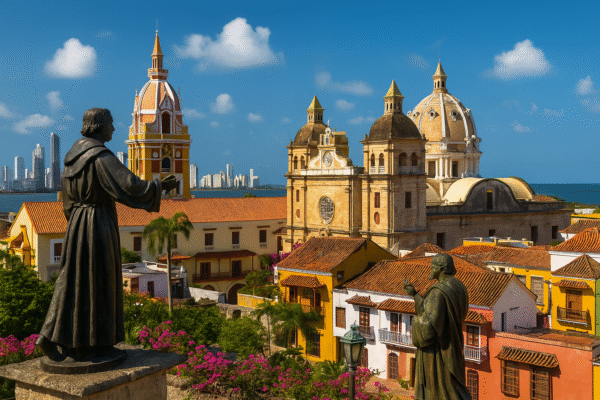California’s allure—sun-drenched beaches, majestic national parks, iconic cities—remains, but the roadblocks are mounting. Wildfires scorched tens of thousands of acres earlier this year, particularly in Southern California. The Eaton and Palisades fires alone displaced communities and grounded flights, gutting early-season tourism revenue.
At the same time, political tensions have brewed discontent among international travelers. Canadian arrivals have dropped sharply—by nearly 15.5%—while Mexican and British visitor numbers have also declined. Heated rhetoric surrounding trade, immigration, and tariffs has clouded California’s image abroad. International visitation is expected to fall by 9.2% in 2025, a loss that cuts deeply into high-spend segments of the market.
The effects are already visible. New York and Florida are reporting similar contractions, but California’s reliance on global tourism dollars leaves it especially exposed. In tourist magnets like Los Angeles, cancellations surged during wildfire emergencies. Hotels, particularly those reliant on long-haul international markets, are now facing occupancy slumps and pricing pressure.
Fresno County: A Case Study in Regional Resilience
Amid this uncertainty, Fresno County tells a different story. Situated in the heart of California’s fertile Central Valley, the county has turned its focus inward—toward regional markets, community-based tourism, and authentic experiences.
Fresno’s geographic position is a key asset. It sits within a three-hour drive of major metros like San Francisco, Sacramento, and Los Angeles, making it an appealing getaway for road trippers and adventure seekers. It also serves as the closest urban base to three world-renowned national parks: Yosemite, Sequoia, and Kings Canyon. This proximity, coupled with affordable lodging and a growing roster of unique attractions, has bolstered Fresno’s visitor numbers.
Fresno Yosemite International Airport Expands Influence
A cornerstone of Fresno’s resurgence is its expanding air connectivity. Fresno Yosemite International Airport (FAT) is undergoing a significant expansion, with a new international terminal slated to open later this year. Already, the airport has upgraded its security checkpoints to streamline passenger flow.
Flights from Atlanta, Dallas, Chicago, Phoenix, and Portland now connect Fresno to major travel markets. Plans for additional routes from New York and Washington D.C. signal growing national interest. By focusing on airlift capacity and convenience, Fresno is transforming from a regional connector to a national gateway.
Farm-to-Fork Tourism Strengthens Identity
Fresno County’s agricultural roots also play a major role in its appeal. As one of America’s leading farm-to-fork destinations, the region offers visitors a culinary journey grounded in fresh produce, local wine, and authentic food culture.
Restaurants like Saizon have earned statewide acclaim for elevating Central Valley ingredients. Farmers’ markets, food festivals, and wine tastings bring the community together while attracting foodie travelers eager to explore California beyond Napa and San Diego. For budget-conscious tourists, Fresno offers a luxury-caliber dining experience without the sky-high prices of coastal cities.
Sporting Events and Regional Collaborations Add Momentum
Fresno’s tourism strategy also taps into the sports tourism market. The region hosts multiple high school and collegiate athletic events throughout the year, including CIF championships that attract thousands of athletes and their families.
Creative partnerships are also fueling visibility. Recent collaborations with cities like Atlanta—complete with co-branded mascot campaigns—have helped Fresno position itself in new travel markets. The result is a diversified tourism base that’s less vulnerable to international market volatility.
Monterey’s Cruise Ban and Tourism Policy Shifts
Meanwhile, not all California regions are faring as well. Monterey recently banned cruise ships from docking, a move led by young environmental activists concerned about marine sustainability. While the ban has won praise from conservationists, it has also cut off a valuable stream of tourism income for coastal businesses.
This decision reflects broader tourism policy debates playing out across the state: how to balance economic benefits with environmental and social concerns. For cities like Monterey, Santa Cruz, and Santa Barbara, the future of cruise tourism remains uncertain.
A Blueprint for the Future
California’s tourism model is undergoing a transformation. The $900 million loss projected for 2025 may be significant, but it also offers an opportunity for reinvention.
Regions like Fresno County provide a glimpse into that future: one defined by domestic travel, regional loyalty, sustainable practices, and authentic storytelling. By focusing on infrastructure, culinary excellence, and natural attractions, Fresno is proving that smaller markets can punch above their weight in tough times.
The Road Ahead
As 2025 progresses, all eyes remain on California. Will international travelers return? Can wildfire recovery campaigns, like Visit California’s $4.3 million initiative, turn the tide? And will Fresno’s success model inspire other inland regions to embrace their strengths?
One thing is clear: the state’s future will depend not just on glitzy marketing campaigns or global flight routes—but on its ability to deliver meaningful, memorable experiences rooted in local pride.
In the battle to save California tourism from turning to dust, Fresno County may just be the Golden State’s secret weapon.
For more travel news like this, keep reading Global Travel Wire


















